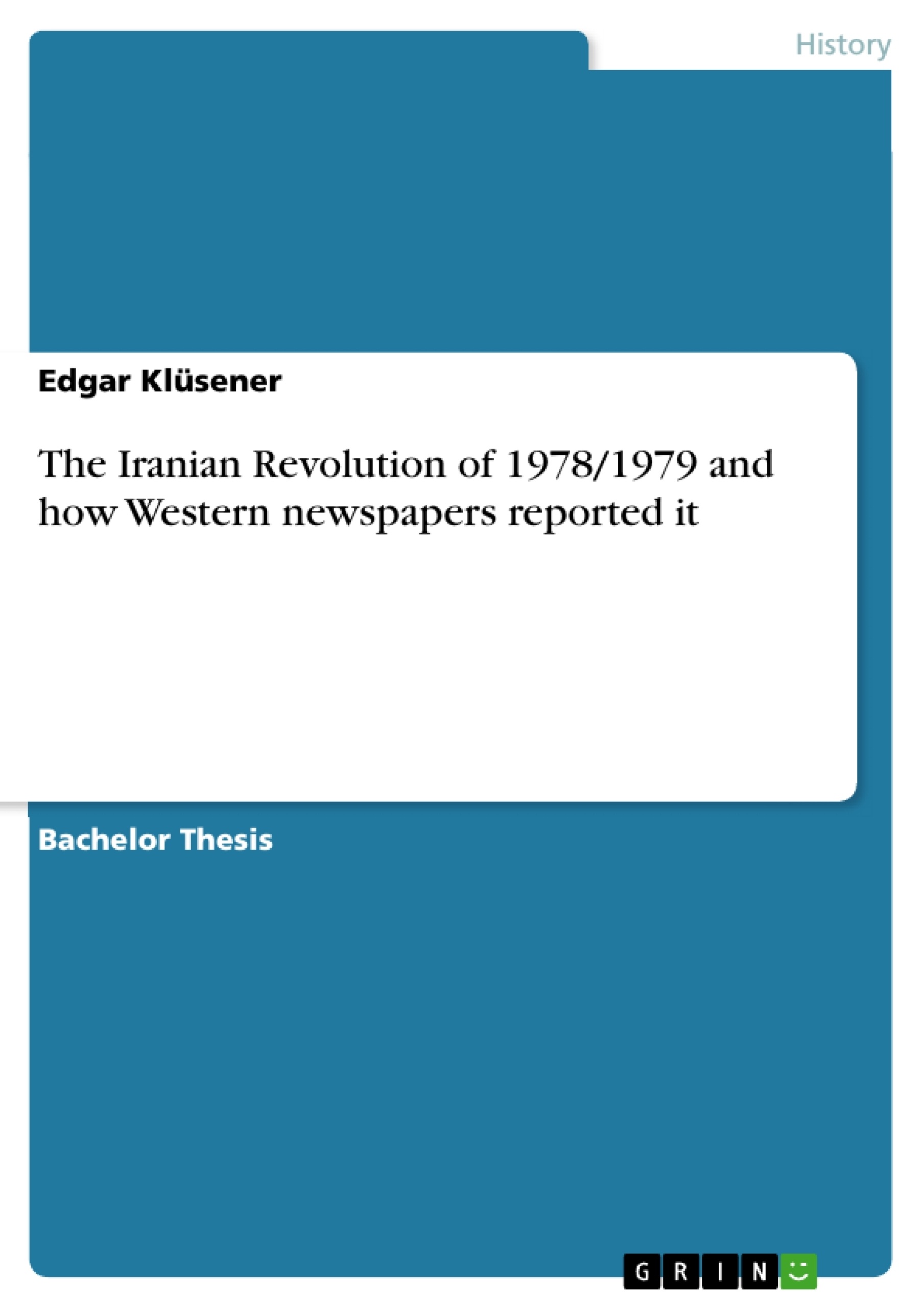The Iranian revolution of 1978/1979 did in many respects not fit the stereotypes of a Third World revolution. What drove and held together the unique alliance between religious leaders, nationalists, and other groups of society, including the radical left, was therefore hard to understand for westerners. It was even harder to understand, that an Islamic cleric, whom many saw as a backwards religious zealot, could in the end overthrow the authoritarian regime of Shah Reza Pahlevi, although it had the most powerful army of the region and the ubiquitous secret service SAVAK at its disposal.
In this background the role of the media was crucial in making events in Iran transparent to the public in the United Kingdom and in Germany. This study will look at how particular newspapers, the Guardian and the Süddeutsche Zeitung, have understood and reported the events. It will also investigate what sources they used and how important the influence of news agencies was. Finally it will analyse to what extent cultural misconceptions and prejudices have or have not tainted the reporting.
Inhaltsverzeichnis (Table of Contents)
- INTRODUCTION
- CHAPTER ONE
- The Revolution
- CHAPTER TWO
- The newspapers
- CHAPTER THREE
- III.2 The role of the news Bureaus
- III.3 – the correspondents
- CHAPTER FOUR
- What they had to say
Zielsetzung und Themenschwerpunkte (Objectives and Key Themes)
This dissertation examines the reporting of the Iranian Revolution of 1978/1979 by two major newspapers, the Guardian (UK) and the Süddeutsche Zeitung (Germany). It aims to understand how these publications interpreted and conveyed the events, the sources they relied on, and the influence of news agencies on their reporting. The study also investigates the impact of cultural misconceptions and prejudices on their coverage.
- The Iranian Revolution as a unique historical event, defying typical Third World revolution stereotypes.
- The role of the media in shaping public understanding of the revolution in the UK and Germany.
- The sources and methods used by the Guardian and Süddeutsche Zeitung in reporting the revolution.
- The influence of news agencies on the newspapers' coverage.
- The potential impact of cultural biases and prejudices on the reporting of the revolution.
Zusammenfassung der Kapitel (Chapter Summaries)
Chapter One introduces the Iranian Revolution and its unique characteristics, exploring the factors behind the alliance between religious leaders, nationalists, and other groups, including the radical left. Chapter Two delves into the specific context of the Guardian and Süddeutsche Zeitung newspapers, outlining their editorial stances and reporting styles. Chapter Three investigates the role of news bureaus and correspondents in covering the revolution, analyzing their access to information and the challenges they faced. Finally, Chapter Four explores the narrative strategies employed by the newspapers in reporting the revolution, examining how they framed the events and presented different perspectives.
Schlüsselwörter (Keywords)
The main keywords and focus topics of this dissertation include the Iranian Revolution, Western media reporting, the Guardian, Süddeutsche Zeitung, news agencies, cultural misconceptions, and the role of journalists in shaping public understanding of international events.
- Quote paper
- BA(Hons) Edgar Klüsener (Author), 2006, The Iranian Revolution of 1978/1979 and how Western newspapers reported it, Munich, GRIN Verlag, https://www.grin.com/document/60069



